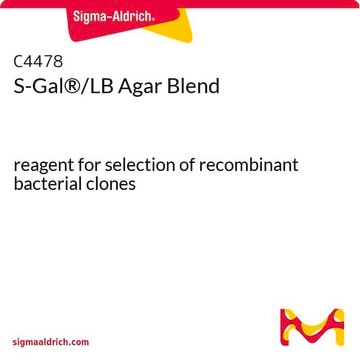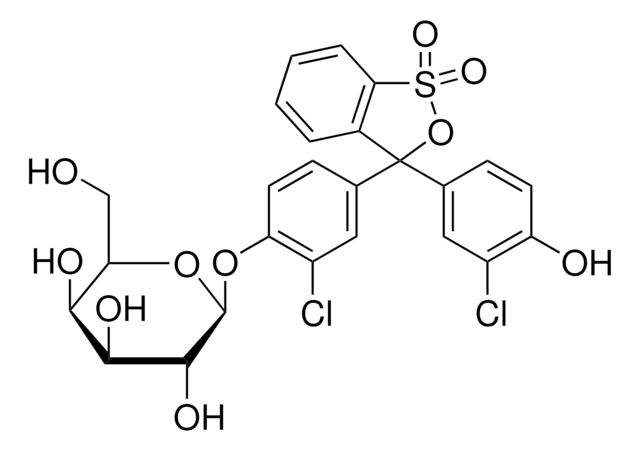B8931
Magenta-Gal
reagent for selection of recombinant bacterial clones
Synonym(s):
Red-Gal, 5-Bromo-6-chloro-3-indolyl β-D-galactopyranoside
About This Item
Recommended Products
grade
for molecular biology
sterility
non-sterile
product line
BioReagent
Assay
≥98.0% (HPLC)
form
powder
solubility
methanol: soluble
suitability
suitable for substrate for β-galactosidase
storage temp.
−20°C
SMILES string
OC[C@H]1O[C@H](Oc2c[nH]c3cc(Cl)c(Br)cc23)[C@H](O)[C@@H](O)[C@H]1O
InChI
1S/C14H15BrClNO6/c15-6-1-5-8(2-7(6)16)17-3-9(5)22-14-13(21)12(20)11(19)10(4-18)23-14/h1-3,10-14,17-21H,4H2/t10-,11+,12+,13-,14+/m1/s1
InChI key
CHRVKCMQIZYLNM-HTOAHKCRSA-N
Looking for similar products? Visit Product Comparison Guide
Related Categories
General description
Application
Principle
related product
Storage Class Code
11 - Combustible Solids
WGK
WGK 3
Flash Point(F)
Not applicable
Flash Point(C)
Not applicable
Personal Protective Equipment
Certificates of Analysis (COA)
Search for Certificates of Analysis (COA) by entering the products Lot/Batch Number. Lot and Batch Numbers can be found on a product’s label following the words ‘Lot’ or ‘Batch’.
Already Own This Product?
Find documentation for the products that you have recently purchased in the Document Library.
Customers Also Viewed
Our team of scientists has experience in all areas of research including Life Science, Material Science, Chemical Synthesis, Chromatography, Analytical and many others.
Contact Technical Service










